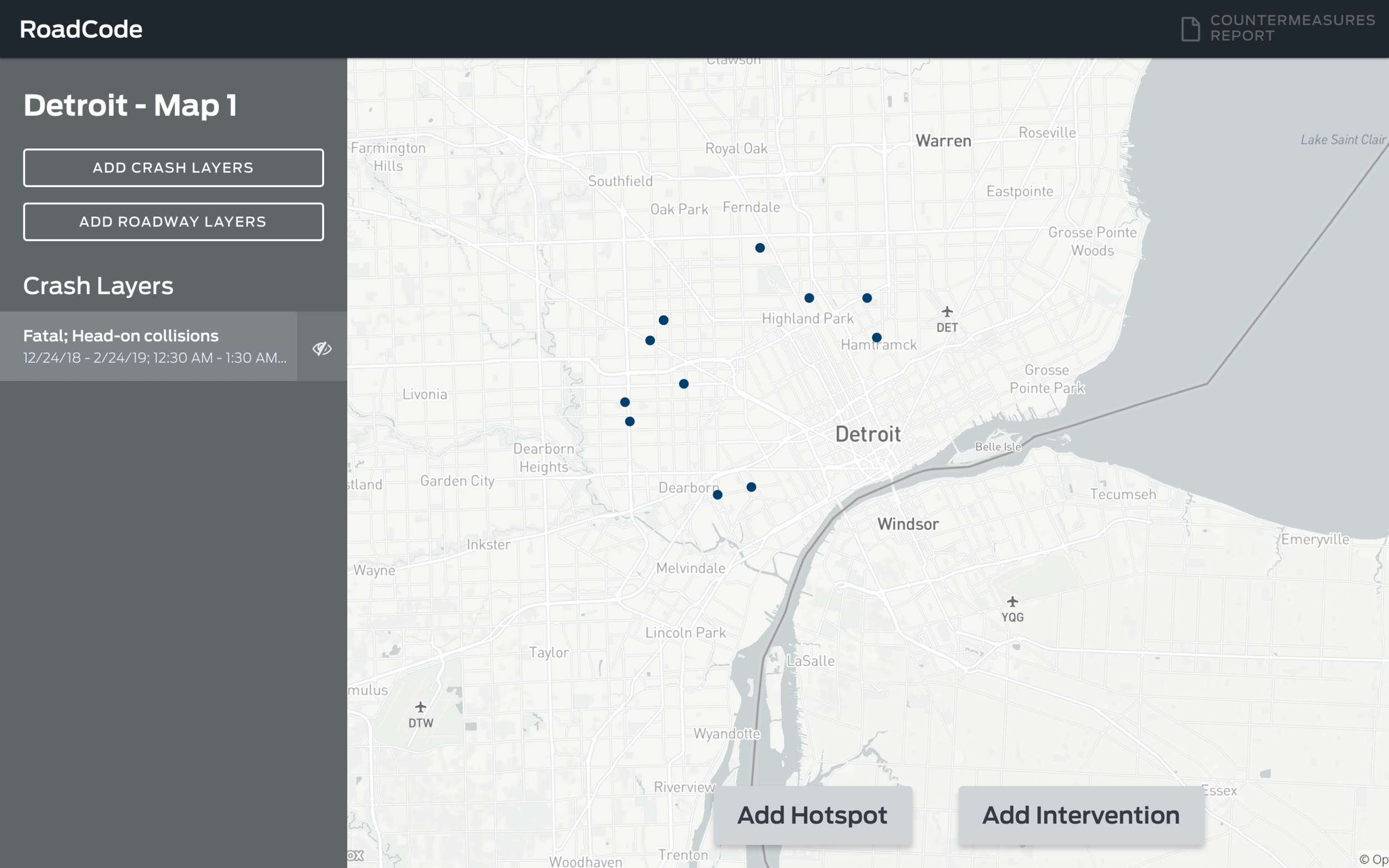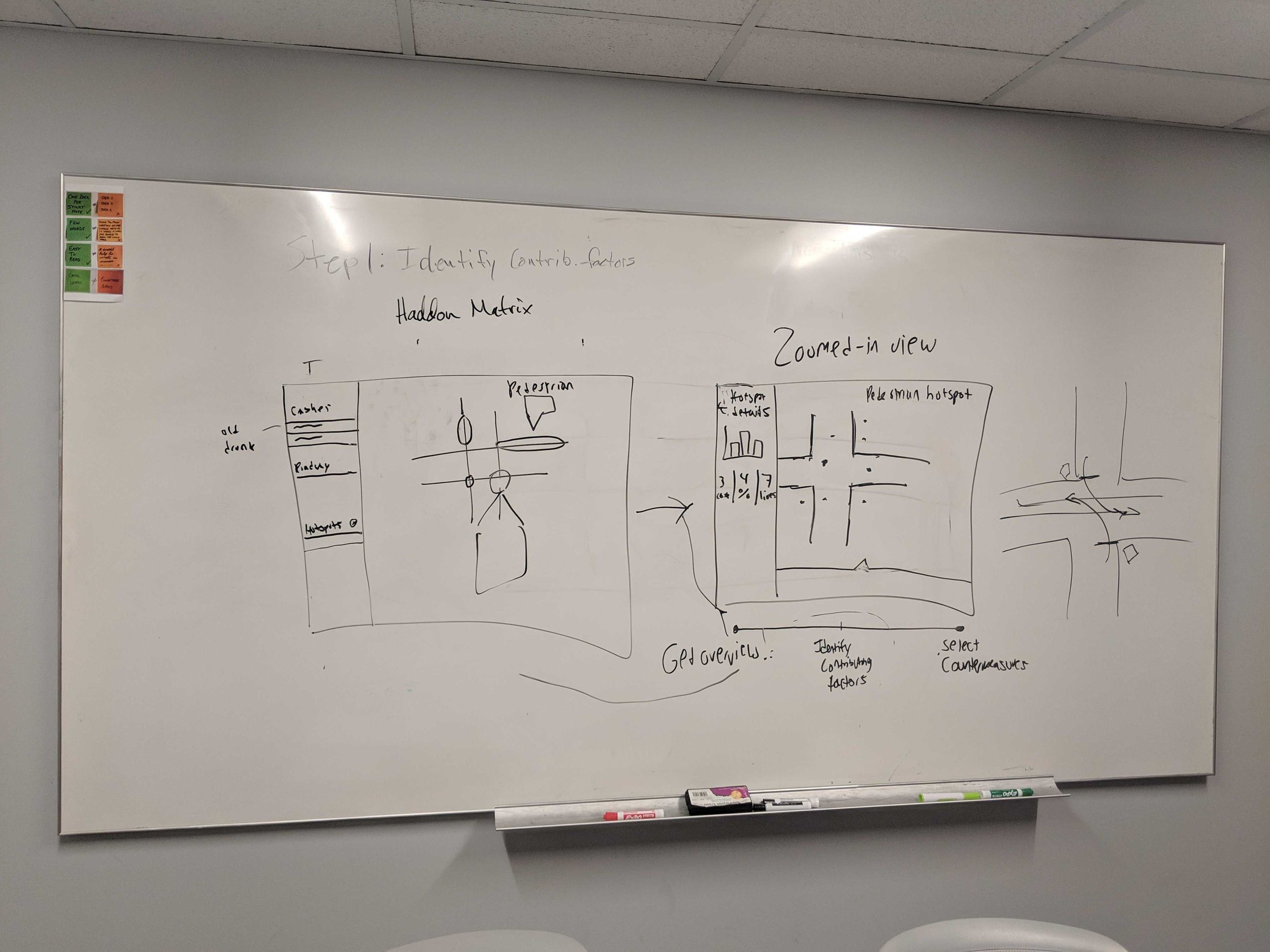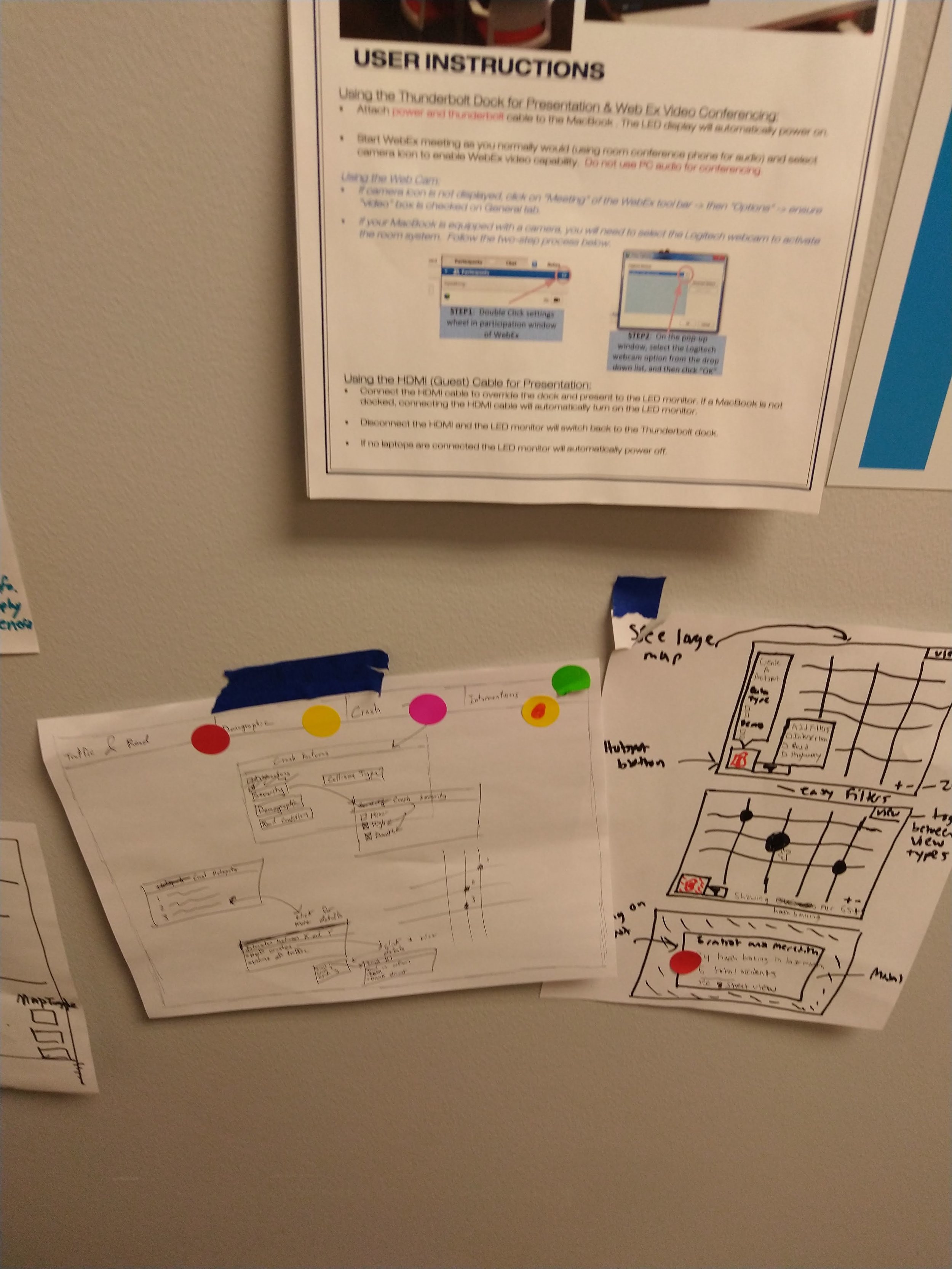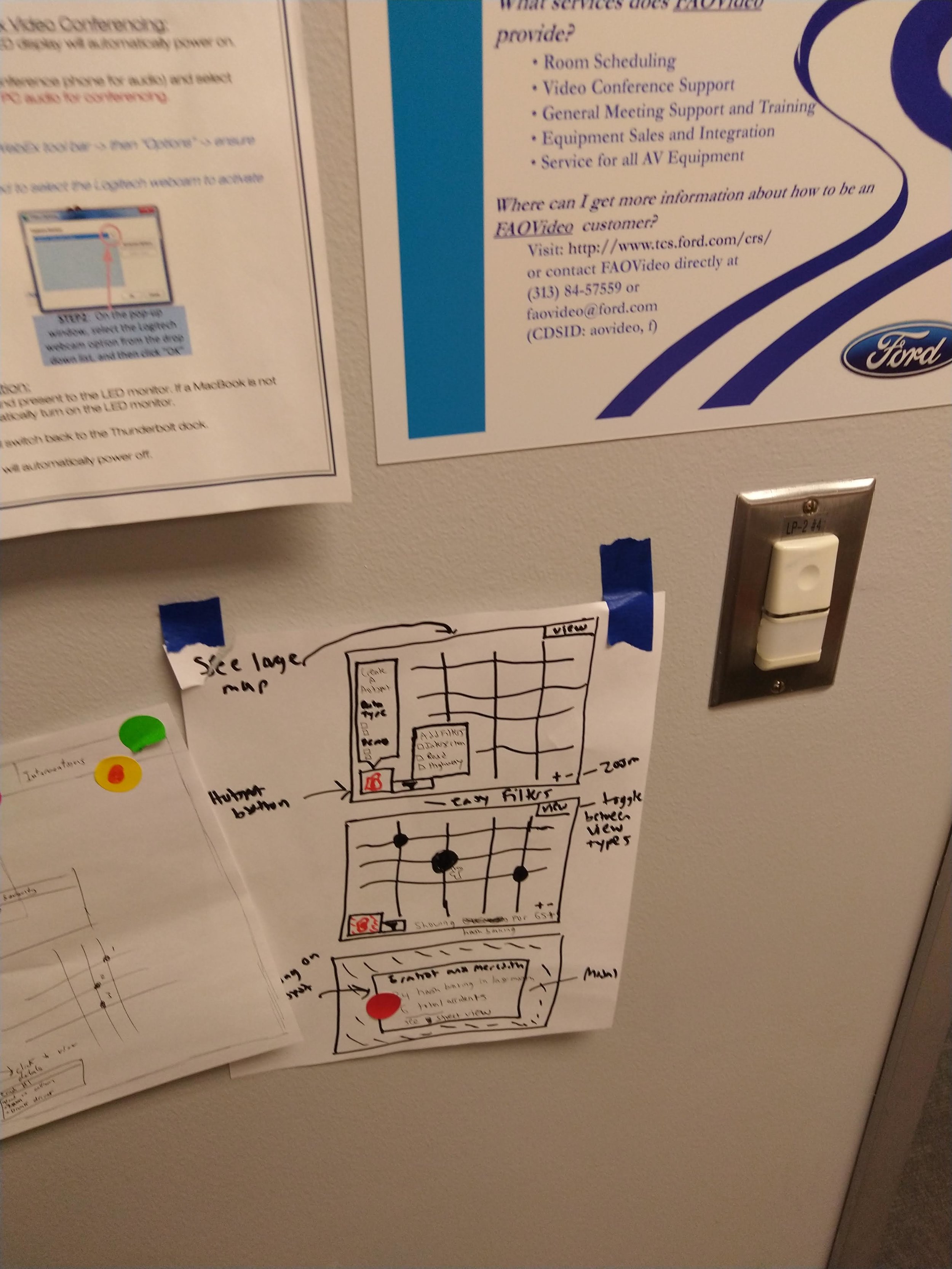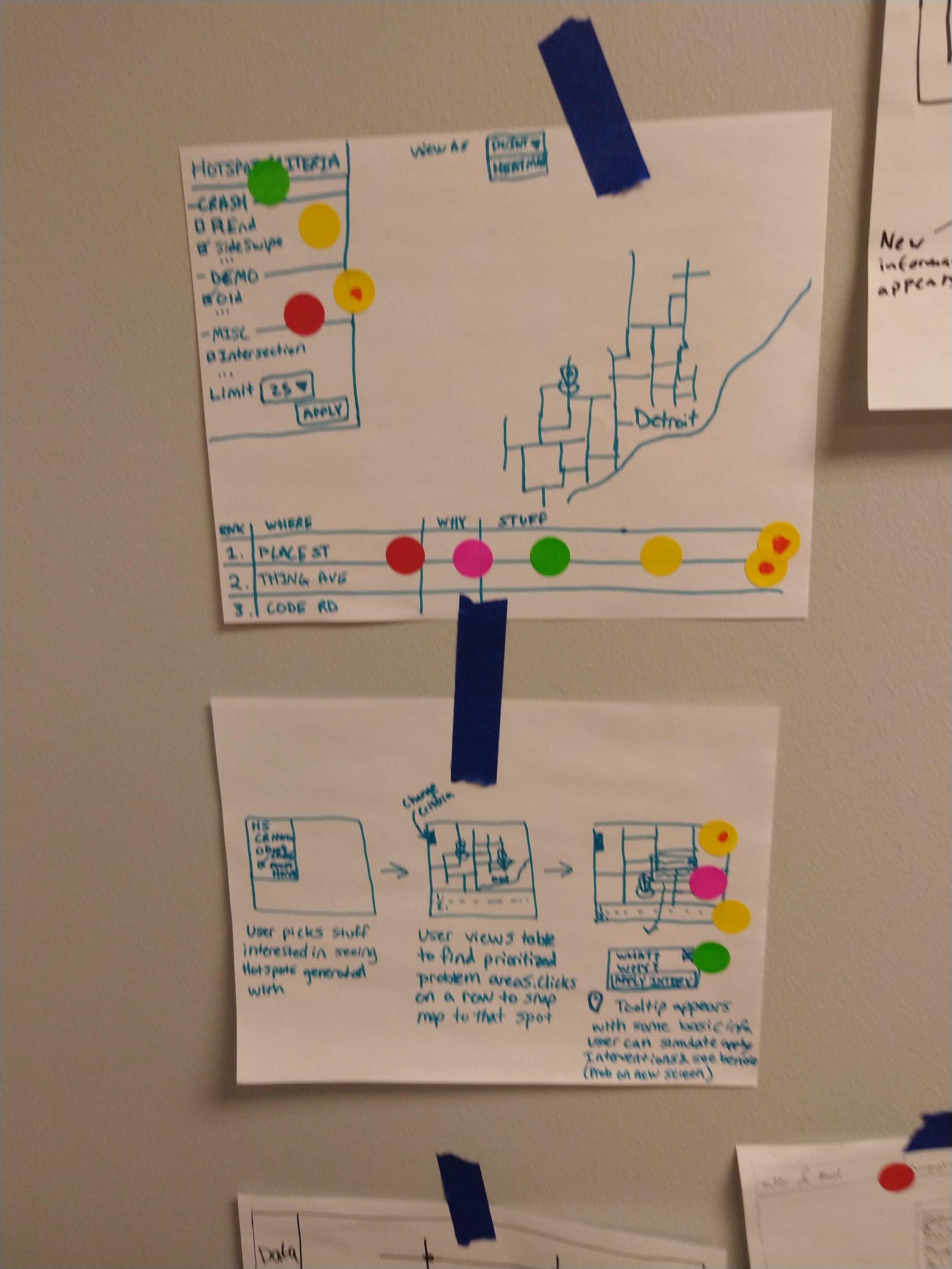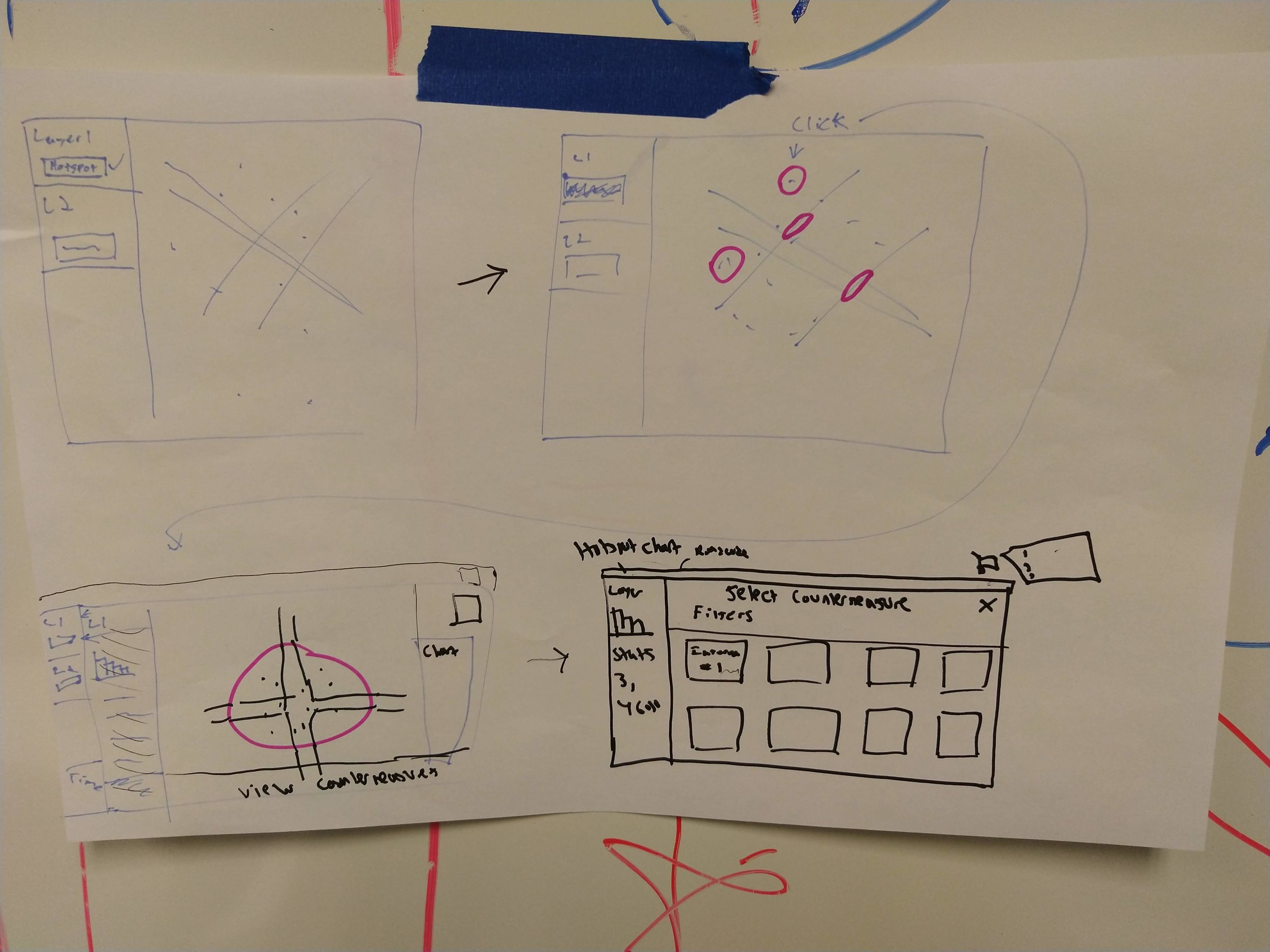RoadCode
Helping traffic engineers make more informed
traffic safety decisions
OVERVIEW
I led design for a project born out of a collaboration between Ford and FordLabs: RoadCode, a safety visualization tool aimed to help traffic and safety engineers make more data-informed safety decisions.
The project originally kicked off as part of the US Department of Transportation’s “Solve for Safety” competition and, due to the success of our team and the project, RoadCode became a fully commercialized product by Ford. RoadCode was selected as one of two finalists for the competition (out of a field of over 50 entrants including Uber and Allstate Insurance).
ROLE: Product Designer
TEAM: Product Manager, Product Owner, Engineers (4), Data Scientist, Safety Analyst
TIME: Feb - Mid June 2019 (3.5 months)
METHODS: Interviews, Personas, Design Studios, Sketching, Hi-Fidelity Comps
PROJECT MOTIVATION
When making decisions regarding traffic safety, engineers at local, county, and state road agencies are limited by the use of only one data set: crash data, which only gives information about what happened a year prior. In addition, the tools they currently use are old, clunky and hard to use.
Thus, the question my team and I set out to answer was:
How might we help traffic and safety engineers (TSEs) make better, more well-rounded decisions by allowing them to visualize and use various types of data (crash data, connected vehicle data from Ford cars, and cell phone data) all in one easy-to-use interface?
MY CORE RESPONSIBILITIES
Note: This was a 0-1 design project, going from a concept that didn’t exist to working MVP in 3.5 months.
Led the overall design experience, from the flow to the final visual design crafting everything from scratch.
Collaborated with the Product Owner and Product Manager on creating a roadmap and vision for the future.
Led user research and all facilitation / workshopping exercises with the team.









